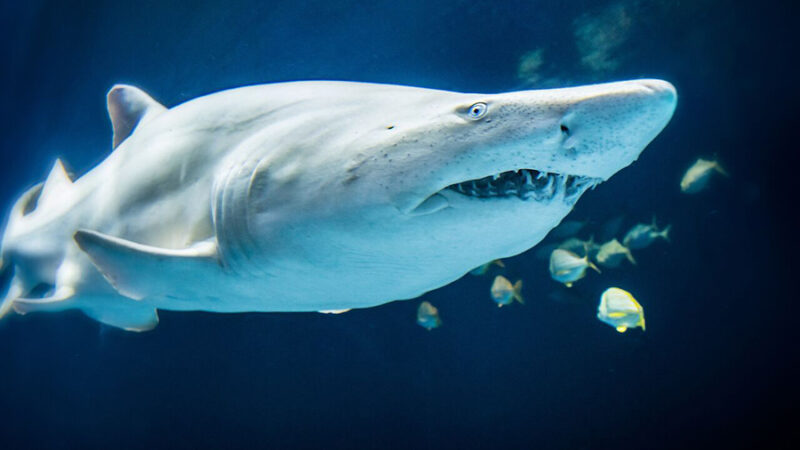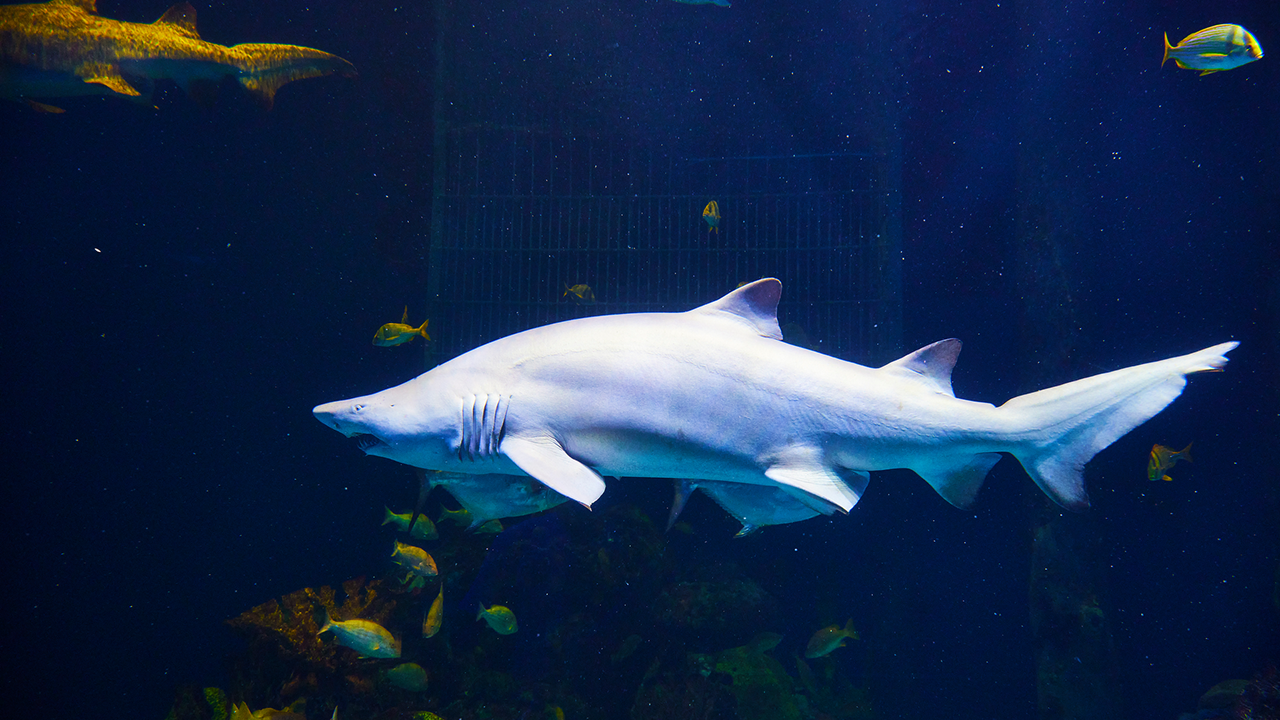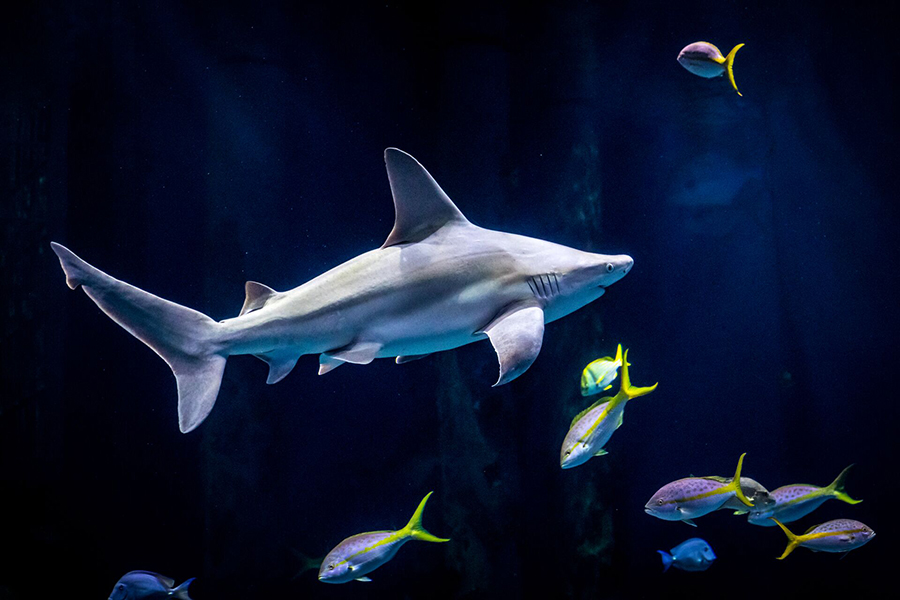Sand Tiger Shark

- Common Name: Sand Tiger Shark
- Scientific Name: Carcharias taurus
- Diet: Bony fish, rays, crab, lobster, squid, smaller sharks
- Range: Atlantic Ocean, Indian Ocean, Pacific Ocean
- Size: 7 to 10 feet and 200 to 350 lbs
- Lifespan: 15 to 35 years
IUCN Red List Status: Critically Endangered
Critically Endangered
Overview
Sand tiger sharks are large, slow moving coastal sharks. They are readily identified due to their pointed snout and their longer pointed teeth that are always visible. These sharks look fierce but are not aggressive and pose little risk to humans.
Geographical Distribution and Habitat
Sand tiger sharks are found in most of the warm temperate and tropical coastal seas except the central and eastern Pacific. Sand tiger sharks are most often found inshore in shallow bays, sandy and rocky coastal areas, and near coral reefs. They are seen at depths ranging from 6 to 625 feet but spend much of their time near the bottom.

Diet
Sand tiger sharks feed primarily on a variety of bony fish; their long, narrow teeth are well adapted to catch and hold them. This species will also consume rays, squid, crab, lobster, and smaller sharks. Sand tiger sharks have been observed utilizing cooperative feeding strategies with several sand tiger sharks surrounding and herding schools of fish prior to feeding on them.
Fun Facts
- Sand tiger sharks will come to the surface to gulp air which is used to adjust and maintain neutral buoyancy.
- Sand tiger sharks are ovoviviparous meaning that the young develop as unattached embryos within the uterus and are nourished by a large egg yolk. These eggs hatch inside of the mother and the pup is birthed live.
- Sand tiger sharks have 2 uterine chambers where 16 to 23 eggs can develop once fertilized. The first shark to hatch from its egg will begin to consume the other eggs around it (embryophagy). This will typically limit the litter size to 2 sharks, one from each uterine chamber.
ADD-ON EXPERIENCE
Out to Sea
Shark Dive
The Out to Sea Shark Dive takes you underwater inside our steel enclosure to come face-to-fin with sand tiger sharks, brown sharks, and Atlantic goliath groupers. Our state-of-the-art air helmets allow you to comfortably submerge underwater without diver certification.
Learn About Other Animals
Out to Sea
Sandbar Shark
- Common Name: Sandbar shark
- Scientific Name: Carcharhinus plumbeus
- Diet: Bony fishes, smaller sharks, rays, octopuses, mollusks, crabs, and shrimp
- Range: Tropical Atlantic, Pacific, and Indian Oceans
- Size: 6 to 8 feet and 100 to 200 pounds
- Lifespan: 20 years or more


